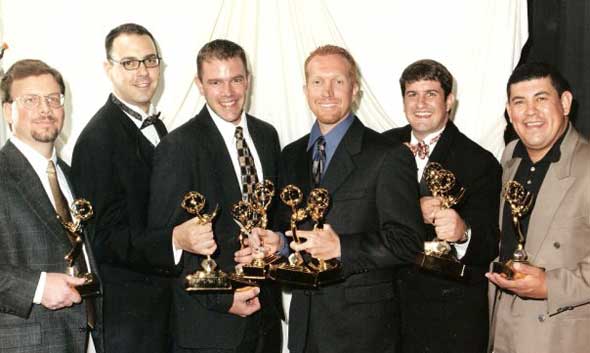The idea behind video editing is half passion and half technique. Video editing is more than just editing…it is creating a story, creating a vision that forces the audience to forget they have peripheral vision.
How do we do that…well, let me say that it has taken me years and years of editing tape-to-tape and non-linear editing. You have to understand the technical constraints in-order to manipulate the editor to make it produce what your mind is envisioning.
How do I edit…well, I work first with technique…then passion!
1) I like to build sequences. What do I mean by sequences? Well, a series of shots that creates a series of visual images that shows the action. An example would be if you are getting out of a car and closing the door. The first shot would be a wide shot of the car as you get out of the car, to the tight shot of your hand opening the handle, leading to the next medium shot of the door opening, etc. One of the best directors I think uses sequences very well is M. Knight Shyamalan. He likes to use a series of shots brought together where they lead from wide shot to tight shots in sequences. This technique is allows the audience to engage with the visual story without even realizing it has happened.
2) I like to let sound drive the edit. I LOVE SOUND EDITING. I may not be the best technical sound editor, but I love to use sound to predispose the audience to what shot is about to come. If I am getting ready to show you the train is going by, I like to slowly bring the sound up from the train in the preceding shot to get you mind thinking train and then BAM…there is the train. An since I like to edit in sequences (wide to tight shots), and there is a “jump cut”, you can use sound to blend the edit to fake out the mind. You basically make the eye forget the visual mistake by nailing it with some sound that distracts the eyes. I also like crisp sound to edit. If the hammer is nailing the nail, I want to hear that crisp sound and make sure it matches!
3) WIDE, MEDIUM, TIGHT, SUPER TIGHT…TELL THE STORY! That is my motto…my mantra. I am somewhat a purest when it comes to my editing style. Now, I can get flashy with those fast, graphical edits…but I like to tell the story as I would visually see it with my eyes. Our eyes do not pan, they do not zoom…so why should we edit that way? You will not see me edit pans or zooms unless it reveals something. So, I search for the opportunity to edit from a wide to tights. Especially in interviews where I want to create pacing…start with a wide shot on a comment, then cut to the tight shot comment for emphasis. This creates pacing and visual interest!
4) I edit in a Non-Linear Paradigm (Final Cut & Avid) using Linear methods. I am in the zone when I have two BetaSP Decks side by side, manipulating the four channels of audio and one video track to tell a story. It is my opinion that most editor these days are sloppy allowing the non-linear editing software just create a dissolve or effect when there is nothing else to do. Linear editing is a tremendous exercise forcing one to think two shots ahead and three shots behind. You have to know what shots you are going to use next and how they blend with the previous shots. YOU ARE TELLING A VISUAL STORY…not just creating visual overload.
5) I like to evaluate a sequence or the final product in a couple ways…mainly to see if I gained success. I like to watch the video with my ears closed, eyes open; then watch again with eyes closed and ears open. This is to see of the sound and the visuals tell the same story. I also like to get others to watch the the final product and watch them as they watch the story. I like to see where they loose interest, where they have emotion, basically to see if the purpose matched the reaction.
6) I like telling stories! I like to be able to throw out all the rules and sacrifice the technique in order to achieve a better story. If there is a great moment captured and it needs to breathe…no fast edits, no sequences, no fancy effect…then let it breathe! Your audience will thank you for it and come back for more!!!!
Editing Food For Thought! Do you have any thoughts?

